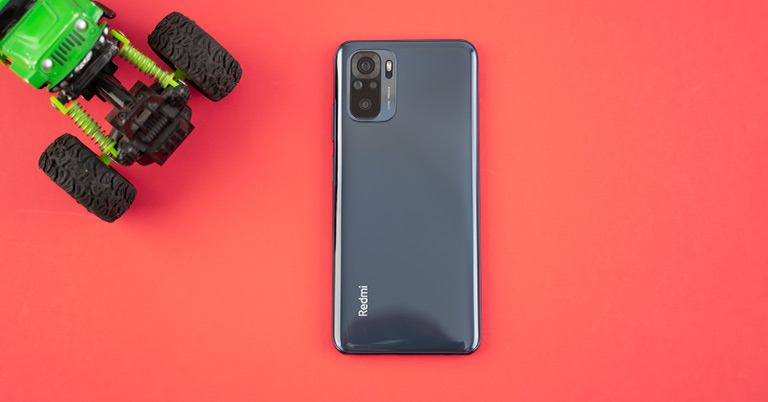
It’s like clockwork. Xiaomi has been delivering excellent budget phones under the Redmi Note series throughout the years. The company recently announced that it has shipped over 200 million smartphones under this lineup. And the new Redmi Note 10 series looks to take things next level, with the standard Note 10 leading the charge. Starting at just NPR 22,000, this phone offers a vibrant AMOLED display and Snapdragon 678, to name a few. Let’s discover more about the Redmi Note 10 in this review.
Redmi Note 10 Specifications:
- Body: 6.32 x 2.93 x 0.33 inches, 178.8 gm, IP53 dust/water resistant
- Display: 6.43 Super AMOLED panel, Corning Gorilla Glass 3, 1100 nits (peak), 4500000:1 NTSC contrast, 60Hz refresh rate
- Resolution: FHD+ (2400 x 1080 pixels), 20:9 aspect ratio
- Chipset: Qualcomm Snapdragon 678 (11nm Mobile Platform)
- CPU: Octa-core (2×2.2 GHz Kryo 460 Gold & 6×1.7 GHz Kryo 460 Silver)
- GPU: Adreno 612
- Memory: 4/6GB LPDDR4X RAM, 64/128GB UFS 2.2 storage (expandable)
- Software & UI: MIUI 12 on top of Android 11
- Rear Camera: Quad-camera;
– 48MP Sony IMX582, f/1.79 primary lens
– 8MP Sony IMX355, f/2.2 wideangle lens
– 2MP, f/2.4 depth sensor
– 2MP, f/2.4 macro sensor, 4CM
– LED flash - Front Camera: 13MP, f/2.5 lens (punch-hole)
- Audio: 3.5mm headphone jack, stereo speaker, Hi-Res audio
- Security: Side-mounted fingerprint sensor
- Connectivity: Dual-SIM (Nano), WiFi 802.11 a/b/g/n/ac, Bluetooth 5.0, GPS / AGPS / Glonass / Beidou, USB Type-C, 4G LTE
- Sensors: 360 Ambient Light, Proximity, E-compass, Accelerometer, Gyro
- Battery: 5000mAh with 33W charging (33W charger inside the box)
- Color options: Frost White, Shadow Black, Aqua Green
- Price in Nepal: Rs. 21,999 (4/64GB) | Rs. 22,999 (4/128GB) | Rs. 24,999 (6/128GB)
- Buy here (Daraz | Sastodeal)
Redmi Note 10 Review:
Design & Build
- Glass front, plastic frame/back
- Lightweight build, “Evol.” design
When I said this phone take things to the next level, there aren’t just one or two factors at play here. While the AMOLED screen steals the spotlight, I am more thankful for the relatively compact design of the Redmi Note 10, to be honest. Coming from the Note 9, it is 20 grams lighter (179 gm < 199 gm) and a lot more ergonomically pleasing to hold.
The phone also has a 3D curved design making it all the more comfortable on the hand. Plus, the buttons are easy to reach and give nice tactile feedback. Yet, the side frames bulge out by quite a bit which does end up feeling a little weird on an otherwise excellent design.
Mind you, this is an all-plastic phone and Xiaomi has parted ways with Gorilla Glass protection on the camera module this time around—while its predecessor had Corning’s Gorilla Glass 5 on the rear camera setup. Moreover, the camera layout has also seen a fresh overhaul. The bulky layout on the Note 9 that elongated to the fingerprint sensor has been replaced with one that somewhat resembles the camera module on the Redmi K40 series.
Side-mounted fingerprint sensor
The camera bump is pretty minimal and doesn’t wobble much when placed on a flat surface either. Similarly, even though the phone has an AMOLED display, Xiaomi has chosen a side-mounted fingerprint sensor instead of one inside the display as a cost-cutting measure. This sits almost flat on the right frame of the phone contrary to the one that’s indented on the Redmi 9 Power. Anyway, it is pretty responsive and unless your palms are sweaty/wet, it won’t give up on you.
Redmi Note 10 also gets an upgrade in terms of ingress protection. The company has replaced the P2i hydrophobic coating with an IP53 rating.
This means that the Note 10 is safe from dust or water sprays—but not a full-on immersion.
Regardless, the Shadow Black variant that I have with me looks quite nice although it attracts fingerprints and smudges by a ton. If you’re a fan of gradient design, the phone is also available in an Aqua Green finish. All of this—from the slim-lightweight design, reworked camera module, to the color choices falls under Xiaomi’s new design language called “Evol.” And I’m all here for it.
Display
- 6.43-inches FHD+ Super AMOLED screen
- 60Hz refresh rate, Corning Gorilla Glass 3
- 1100 nits peak brightness (Sunlight mode)
If you’ve watched our review of the Redmi Note 9, one of the major complaints that we had with the phone was its display. Compared to its competition at the time, the phone came with a rather mediocre screen. Well, no more. One of the most requested features in the Redmi Note series—an AMOLED display has finally debuted.
As a result, Redmi Note 10 is also the cheapest phone to boast an OLED panel. On the contrary, Samsung’s newer releases under this price segment, namely the Galaxy A12 and M12 feature an LCD screen. Well, well, well… how the turn tables.
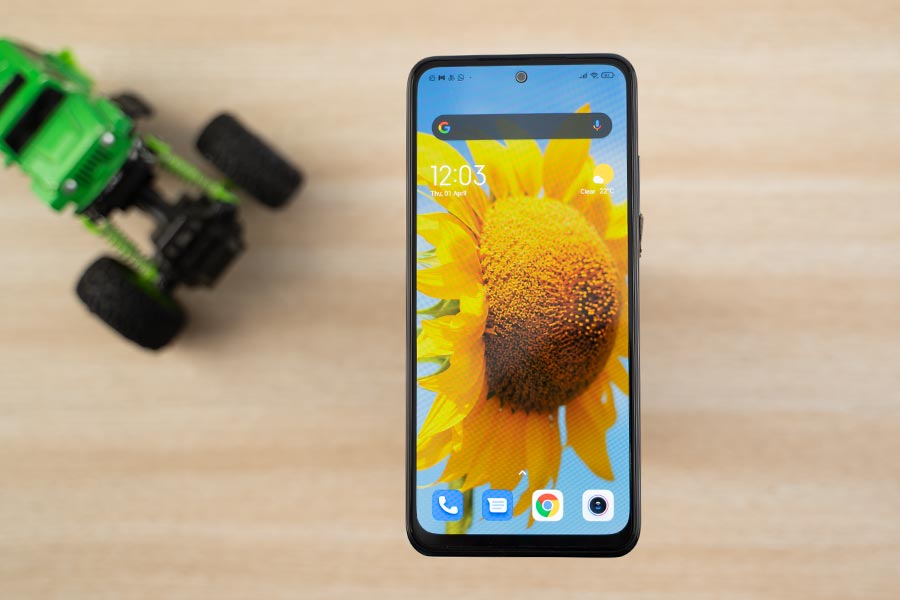
In its default color profile, I didn’t find the phone’s color reproduction to be as vibrant as I’d expect from an AMOLED display. But switching to the “Saturated” option did the trick for me. Here, the contents on this 6.43” FHD screen look quite sharp, vibrant, and with excellent black levels. It has good viewing angles as well and I can’t help but praise Xiaomi for raising the bar in terms of display quality on budget smartphones.
How does this AMOLED screen compare?
For the sake of this review, I even compared it against a couple of other phones with AMOLED screens that are way more expensive than the Redmi Note 10 and found that it holds its ground. Keeping it side-by-side against Samsung’s Galaxy M51, the difference is quite indiscernible. From sharpness to vibrancy, things are neck-and-neck here. Bringing Xiaomi’s own Mi Note 10 Lite into the mix, one can notice how it looks slightly brighter whereas Redmi Note 10 tends to look a bit underexposed.
Moving on, this display is protected by Gorilla Glass 3, which is yet another downgrade coming from the Redmi Note 9. And honestly, I think Xiaomi should get a pass in this regard considering everything else. While the Pro entries in the lineup opt for a smooth 120Hz refresh rate, this one settles for the standard 60Hz panel.
So, gamers might want to spend a little more for a smoother screen. Nonetheless, its minimal punch-hole cutout with 3.54mm diameter isn’t that obtrusive either and complements the overall aesthetics of the phone. Additionally, you also get the Always-on Display (AoD) feature on the Redmi Note 10. There are multiple presets to choose from or you can even customize the AoD screen.
Always-on Display needs work
Yet, AoD is half-baked here and works for like 10 seconds after you’ve locked the phone. I’m hopeful Xiaomi will bring a full-fledged Always on Display with the upcoming MIUI 12.5 update pretty soon. Anyway, another highlighting feature of this screen is its peak brightness. According to the company, Redmi Note 10 can hit a peak brightness of 1100 nits under the Sunlight mode.

Now, we don’t have a photometer lying around to validate this claim but throughout my usage, outdoor visibility hasn’t been an issue so far. It can also get pretty dim so you won’t have a problem looking at it under the bedsheet. Its Widevine L1 certification means you can enjoy HD content from your favorite streaming services too. All in all, the Redmi Note 10 is fantastic to look at for regular usage for content consumption purposes.
Performance
- Octa-core Qualcomm Snapdragon 678 SoC (11nm)
- 4/6GB LPDDR4X RAM, 64/128GB UFS 2.2 storage (expandable)
Jumping to the performance side of things, the phone is powered by Qualcomm’s Snapdragon 678. While it is a fairly new chipset, it is but a small upgrade over the Snapdragon 675 found in Xiaomi’s Redmi Note 7 Pro from back in 2019. This has been paired with 4/6GB of LPDDR4X RAM and up to 128GB of UFS 2.2 internal storage. Thanks to its three-card slot, you can retain dual-SIM functionality even when inserting an external SD card on the Redmi Note 10.
Our 6/128GB unit has fared well so far. Apps open up quickly and multitasking is handled well too. The phone is able to keep multiple apps in the background to facilitate swiftly switching between them as well. For such a famously heavy Android skin, I’m happy with the memory management.
But don’t go overboard by having numerous games and other heavy apps in the background for long because it will have you relaunch the said app from scratch. MIUI’s aggressive resource management kicks in especially after you’ve locked the screen.

Talking about MIUI, Redmi Note 10 runs on Android 11-based MIUI 12.0.1 out-of-the-box. As you’d expect, the visual overhauls Google introduced in the newest version of Android are almost non-existent here. Even the revamped power menu with easy access to your AIoT devices is nowhere to be found. And of course, there are ads. There’s no “one-click” option to disable system-wide ads but with a couple of clicks and a couple of clicks there, you can disable ads in MIUI.
Google-heavy MIUI
By default, apps on the home screen are arranged iOS-style. But if you’re like me who prefers the traditional app drawer implementation, you can change it from the settings. I also like how swiping to the left launches Google Discover card.
Talking about Google, Xiaomi also ships a couple of Google-made apps like Phone, Messages, and Chrome by default. Typing on this thing has been bliss so far too, which is thanks to its z-axis vibration motor. Let’s take a look at some benchmark scores:
| Redmi Note 10 | Redmi 9 Power | ||
| Androbench | Seq. Read | 503.1 MB/s | 513.27 MB/s |
| Seq. Write | 266.26 MB/s | 202.95 MB/s | |
| AnTuTu v8 | Total | 237386 | 183351 |
| CPU | 94596 | 70713 | |
| GPU | 41655 | 34880 | |
| Memory | 50848 | 41178 | |
| UX | 50287 | 36580 | |
| Geekbench 5 | CPU (Single Core) | 537 | 315 |
| CPU (Multi-Core) | 1538 | 1362 | |
| Compute (OpenCL) | 416 | 373 | |
| PCMark (Work 2.0 Performance) | 7887 | 6097 | |
| 3DMark (Wild Life) | 480 | 371 | |
Can I game on this phone?
Besides regular usage, I tested out a couple of demanding games too. You can tweak the graphics up to Balanced graphics and Ultra frame rate in PUBG Mobile. In these settings, the gameplay was perfectly fine with no lags or stutters. After around 16 minutes, the CPU temperature rose to 39-degree which is not that bad.

On the other hand, Call of Duty Mobile reaches up to High graphics and Max frame rates. With anti-aliasing and ragdoll turned on, I noticed a few stutters every now and then. So I switched down the graphics to Medium and turned off other graphics enhancements while keeping the frame rate to Max. And I found that this is the best setting to play COD on the Redmi Note 10.
Similarly, I also played Genshin Impact at Low graphics quality and 30 fps. The game ran smoothly at first but after about 30 minutes or so, once the phone starts heating up, there is a noticeable drop in frame rate. Relatively less demanding games like Injustice 2 and Clash Royale are playable without any stutters or choppy frame rate.
Cameras
- Quad-camera setup at the back
- (48MP main, 8MP ultra-wide, 2MP macro, 2MP depth)
- 13MP selfie camera inside the punch-hole cutout
Time to talk about the cameras. Unlike the 108MP sensor on the Note 10 Pro Max, the standard Note 10 makes do with a 48MP Sony IMX582 primary camera. Then there’s an 8MP ultra-wide, a 2MP macro, and a 2MP depth sensor. For this review, I compared the cameras of the Redmi Note 10 against that of the Redmi 9 Power which has a similar setup as well.
Normal Images
Starting with the normal images, the two phones differ mostly in terms of color science.
While the Note 10 shoots quite warm photos, Redmi 9 Power settles for comparatively more natural-looking images.
Besides this, the former churns out more details and sharper images while photos from 9 Power look hazy and lacking in contrast. In certain instances, Redmi Note 10’s photos are overexposed. Similarly, we also noticed how it attains over-sharpening to compensate for noise reduction.
Wideangle Images
Moving to the ultra-wide shots, the Note 10 brings down the warmer hue to a more digestible level.
In comparison, its images have better details and dynamic range on most occasions and are less grainy too. But in certain instances, the Redmi 9 Power can deliver better highlights and exposure.
Portrait Images
Getting to the portrait images, here too the photos from Redmi Note 10 look warm whereas Redmi 9 Power has a relatively cooler hue.
The ones from 9 Power have a little high saturation too although they’re equal in terms of edge detection.
Macro Images
The macro shots, as you’d imagine, are nothing to write home about.
Both phones are unable to shoot instagrammable photos although the ones from Note 10 are relatively sharper. They differ significantly in terms of color science as well.
Nighttime Images
Regular nighttime images are way better on the Redmi Note 10 too.
It wins in terms of sharpness, exposure control, and maintaining highlights. Turning on Night Mode, the 9 Power excessively minimizes the exposure making the photos look quite dark.
On the contrary, night mode shots from Note 10 retain better sharpness.
Selfie Images
Coming to the front, Redmi Note 10’s 13MP selfie camera gives out better details compared to the 8MP sensor on Redmi 9 Power.
While the latter’s photos look more vibrant, they have soft details and a slightly reddish tint.
Portrait selfies are similar as well and these phones are almost identical in terms of edge detection.
Videography
Here, the Redmi Note 10 is a clear winner on the video front. Comparing both phones’ 1080p/30fps footages, the one from Redmi 9 Power is over-saturated, over-exposed, and unstable. But, videos from Note 10 look way better and stable too, thanks to EIS. The phone can also record 1080p/60fps and 4K/30fps videos but only the former lives up to the “good-enough” category.
vs Realme 8
While writing this review of the Redmi Note 10, I also received our unit of the new Realme 8 and clicked a few samples to see they compare.
From my preliminary test, I found that normal images from the Realme 8 have high contrast with boosted black levels which makes the photos look more vibrant. When it comes to details, things look quite similar though.
Battery
- 5000mAh battery with 33W fast charging
Getting to the battery side of things, Redmi Note 10 gets its juice from a big 5000mAh battery. In a busy day where I’d kept the screen brightness to 80-90% with half an hour or so of GPS usage, photo/video shoot, and heavy gaming, I was able to net out an impressive 7 hours and 17 minutes of screen-on-time.
Likewise, under relatively lax usage, I managed to get up to 8.5 hours of battery endurance. So, if you’re looking for a phone that will power through your day, the Redmi Note 10 is an excellent bet. Charging up the device is equally impressive—albeit falling short of Xiaomi’s official claims.
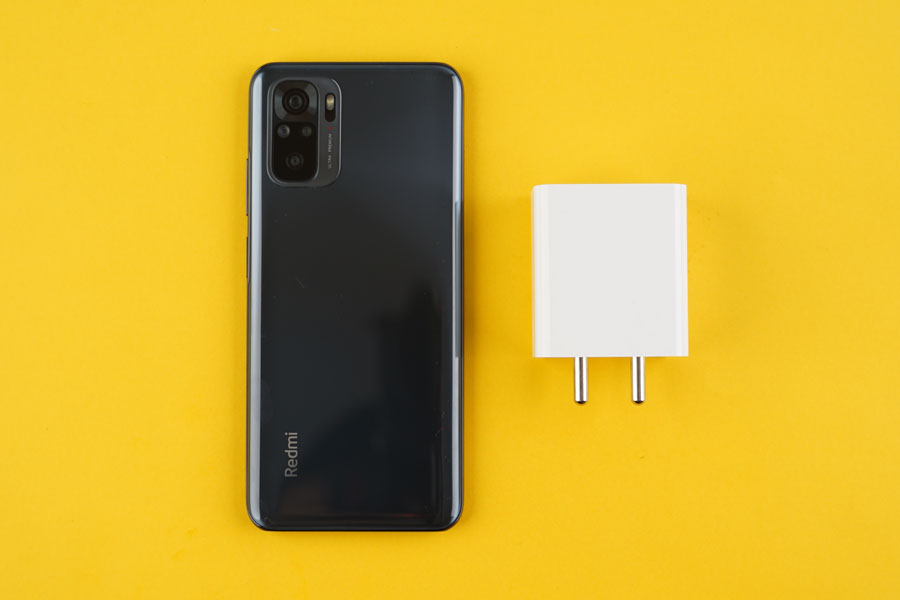
With its 33W fast charging support, the company says that the phone can achieve 67% juice in 30 minutes while filling up completely in just 74 minutes.
Testing the charging speed
Oh, the 33W charger is provided in the box, by the way. Thank you, Xiaomi. Regardless, in two charge cycles during the review, I noticed that Redmi Note 10 was charging at a speed slower than what Xiaomi states. So, I used the Satechi USB-C Power Meter Tester (capable of measuring up to 65W) to check if the phone is actually getting 33W of power at any given instance.
I plugged in the charger at 1% and at no point during the process did I record the charger deliver 33W power—with the highest level settling to around 28.94W (8.85V, 3.27A). As expected, this was in the early stage of charging the phone and we know that it can’t hit the 33W mark later on. After 30 minutes, Redmi Note 10 climbed to 54% while reaching 67% after 39 minutes. Under our test, the phone hit 100% only after 1 hour and 22 minutes.
On the contrary, GSMArena reports that their unit managed to verify Xiaomi’s charging speed claims so we’re a little confused as to what’s going on here. It can’t be because of the difference in our Indian retail unit vs their global retail unit, can it? On a side note, the decimal charging animation in the lock screen looks really cool.
Audio
- Stereo speakers, Hi-Res Audio certified
Redmi Note 10’s audio quality is pretty impressive too. You’re getting a stereo speaker setup with Hi-Res audio which gets plenty loud. Compared to Redmi 9 Power’s dual speakers, the sound quality is almost the same. I did notice that Note 10 was able to deliver more composed audio at full volume while the other sounds a bit muffled.

But dialing down the loudness to 70-80%, I couldn’t notice a difference between the two phones’ speakers. In terms of details in dynamic content, there’s obviously not much to expect here. Still and all, Redmi Note 10 is a great content consumption device because of its AMOLED display and respectable audio setup. Phone calls sound clear too, but I must say that even without turning on the speaker, the audio is loud enough to be audible by people around you. So, I kept the volume level at 40-50% for the best result.
Conclusion
To conclude this review, the Redmi Note 10 elevates the budget smartphone industry by offering something the competition simply hasn’t been able to. It’s got an ergonomic, lightweight design, a vibrant AMOLED display, decent cameras, and a stellar battery life. Plus, Snapdragon 678’s performance isn’t half bad either. With all this, I would definitely recommend the Redmi Note 10 to anyone looking for a smartphone under the NPR 22K price bracket.
- Watch our video review of the Redmi Note 10.
Redmi Note 10 Review: Pros & Cons
Pros:
- Excellent value—an easy recommendation
- Ergonomic, lightweight design
- Fast side-mounted fingerprint reader
- Vibrant Super AMOLED display
- Good-enough stereo speakers
- Decent performance level
- Terrific battery endurance
- Fast charger provided inside the box
Cons:
- Frequent ads inside MIUI
- Cameras require further optimization
- Relatively lax memory management
- Slight build quality downgrade











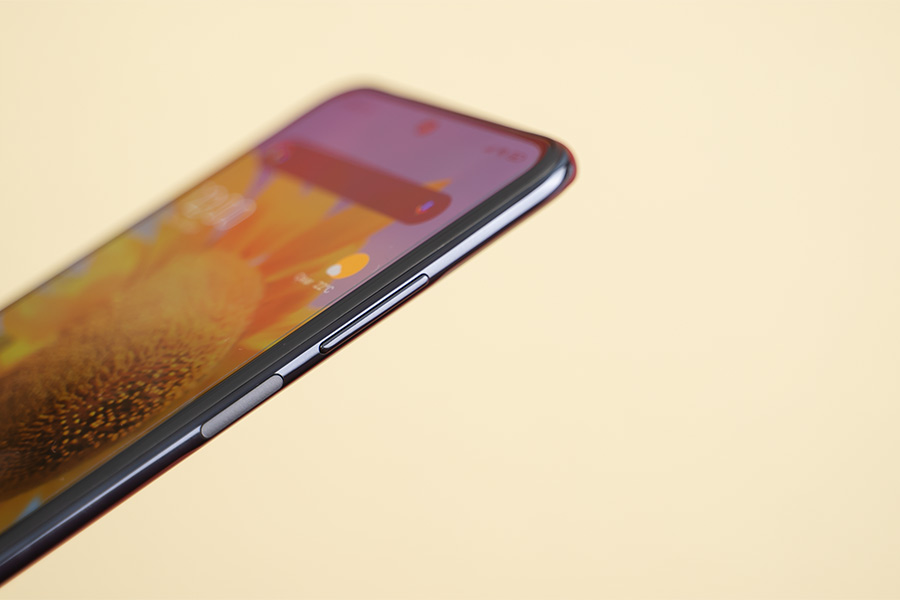
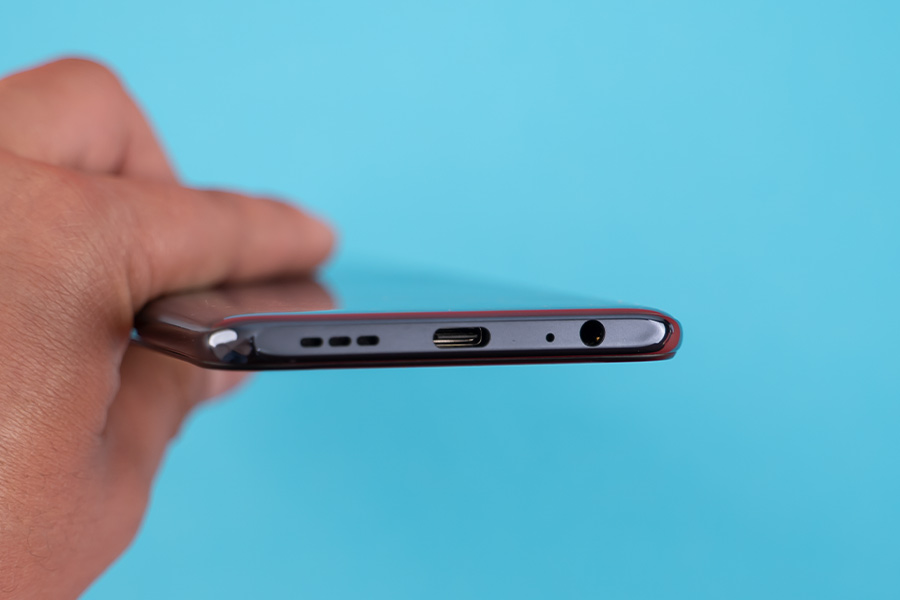


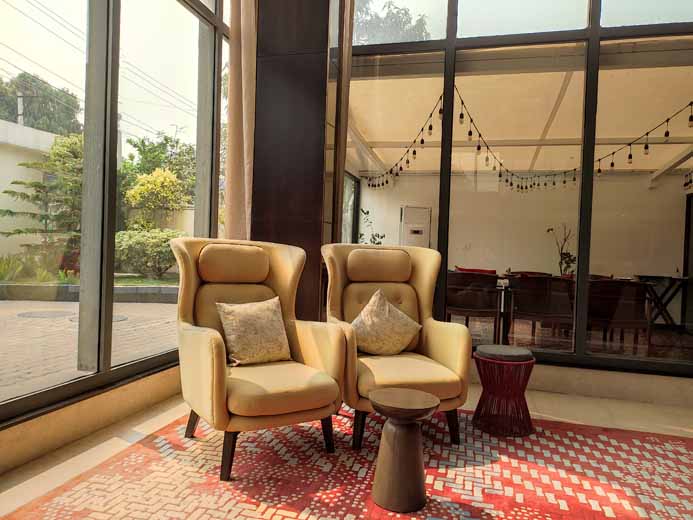

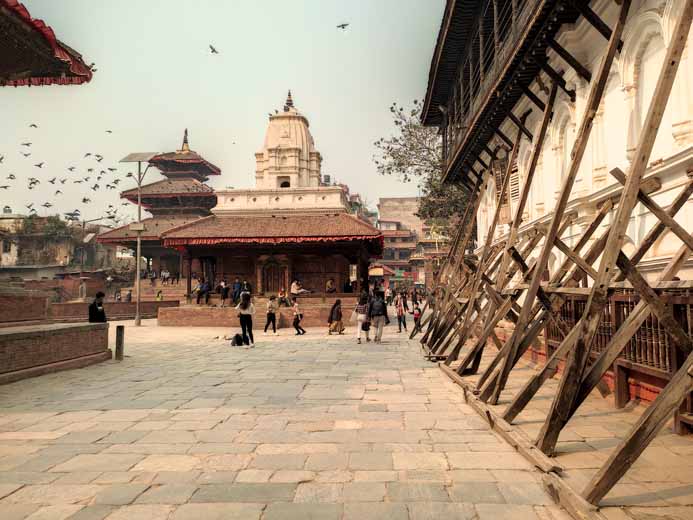



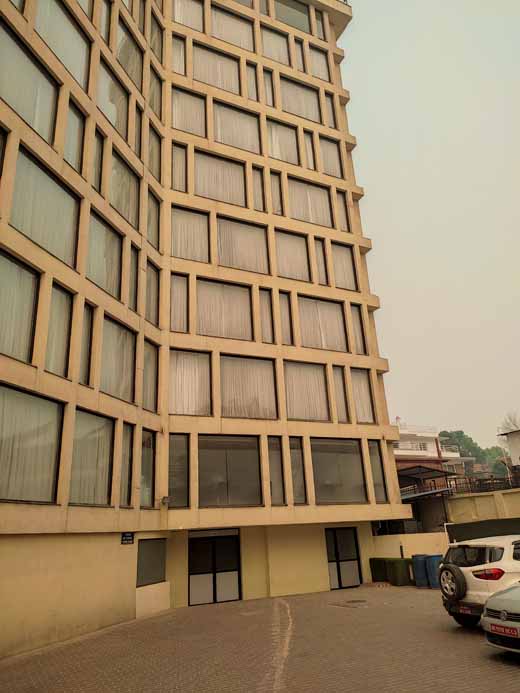



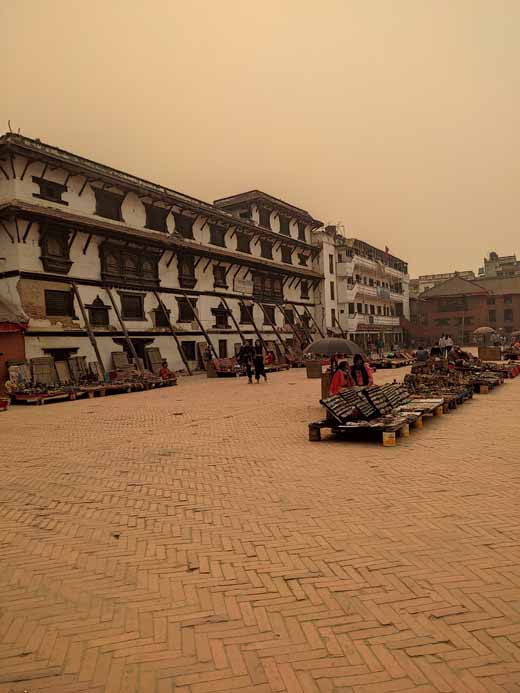







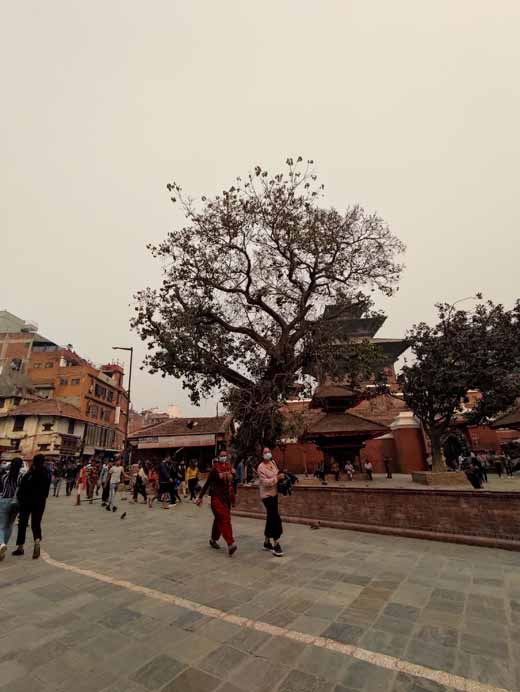





















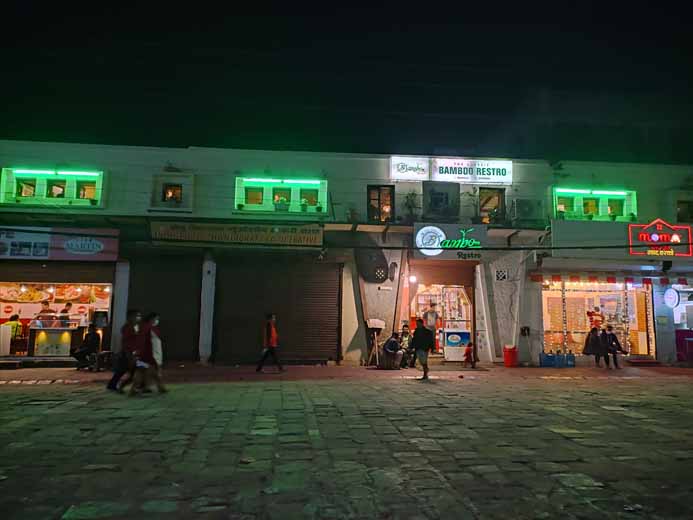
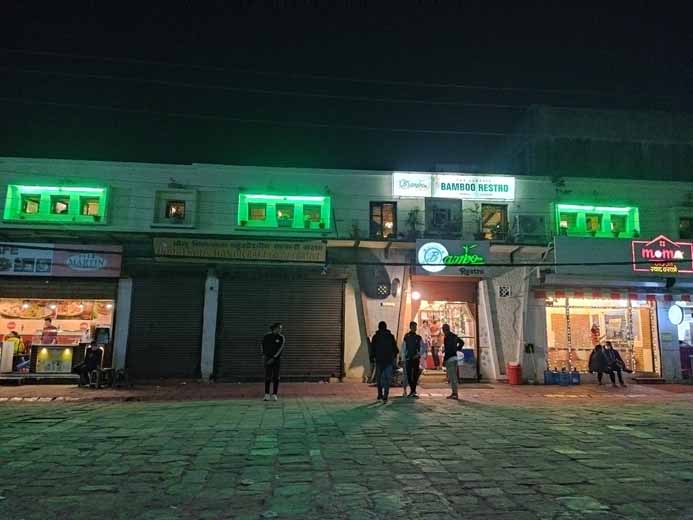
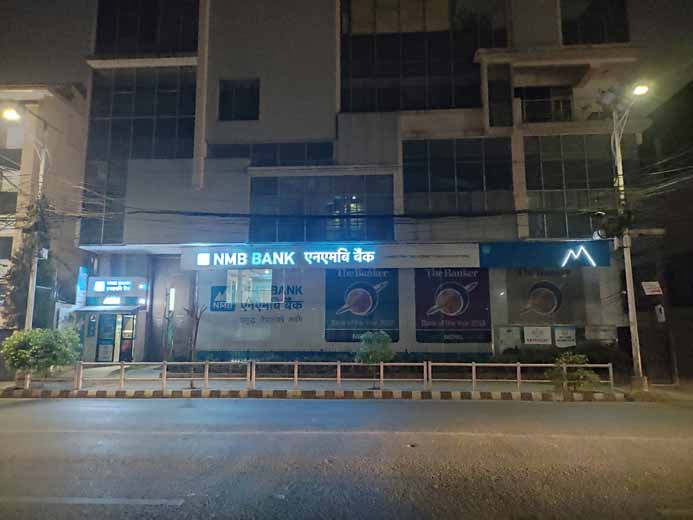
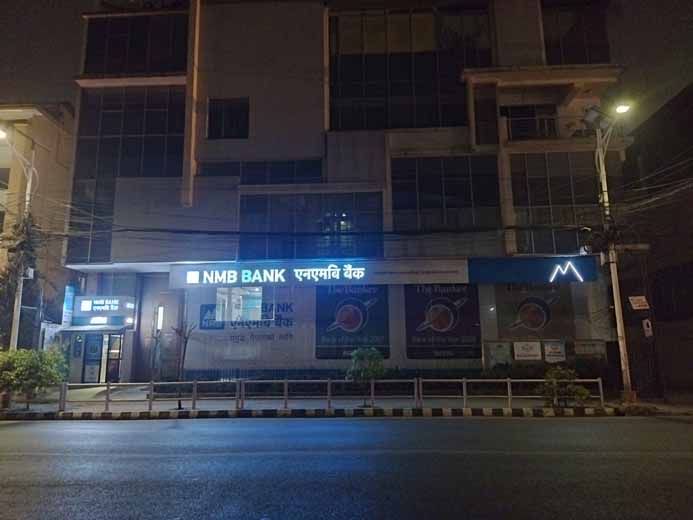
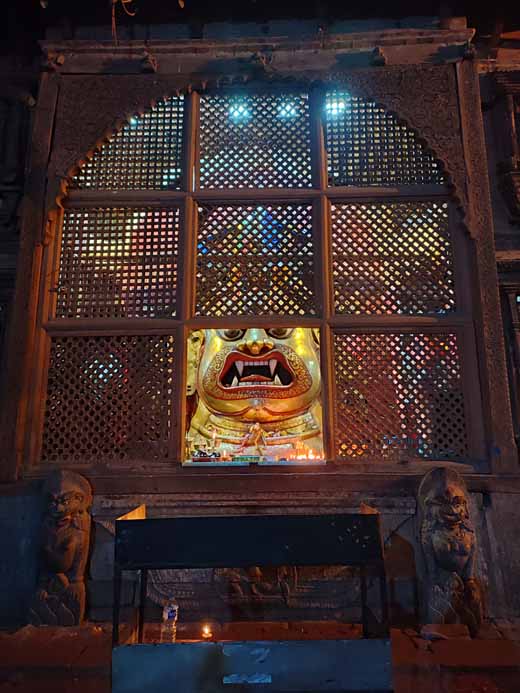


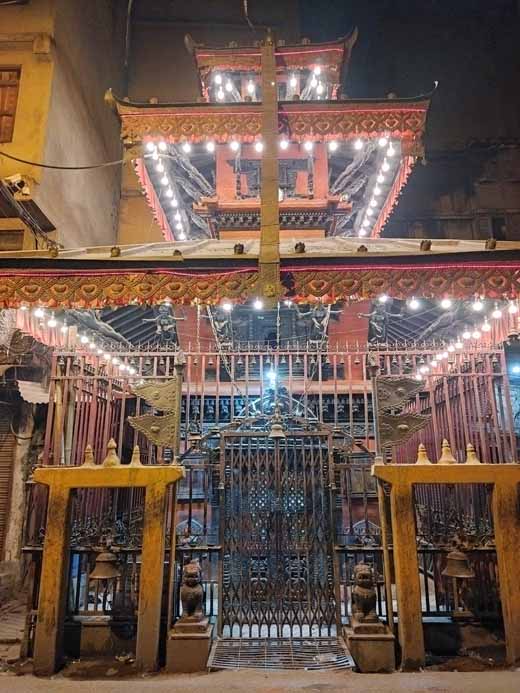
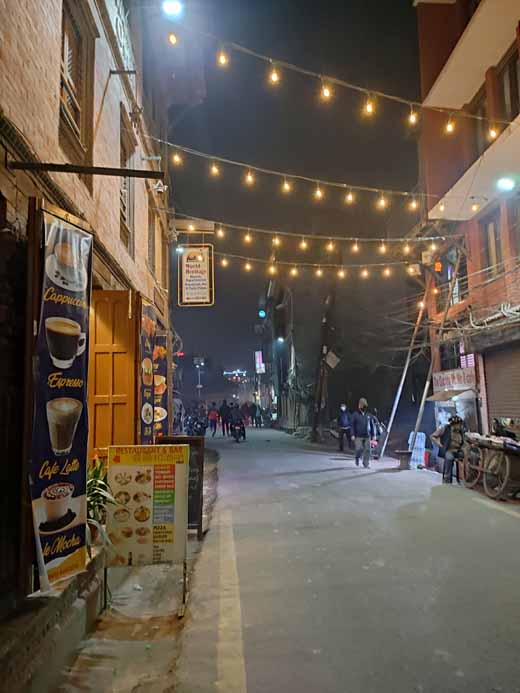
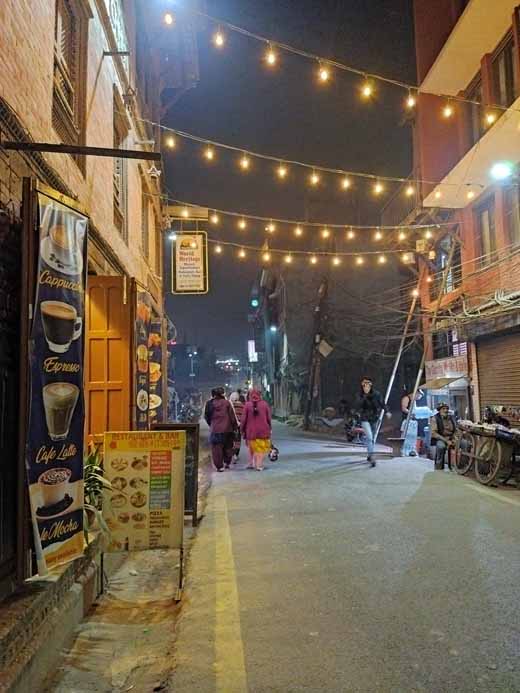
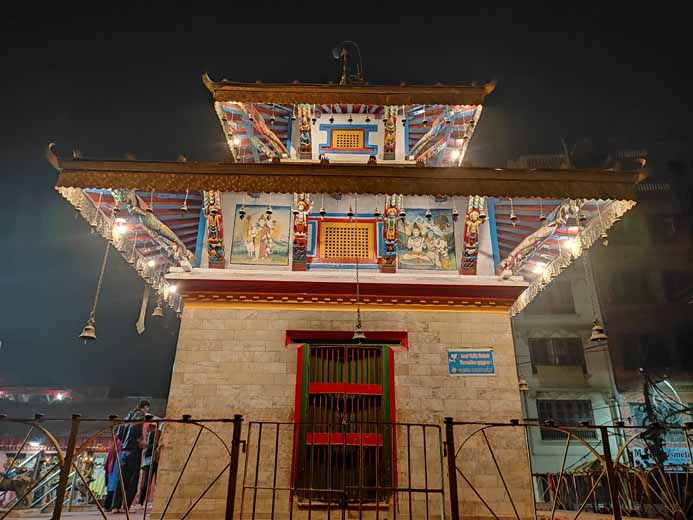

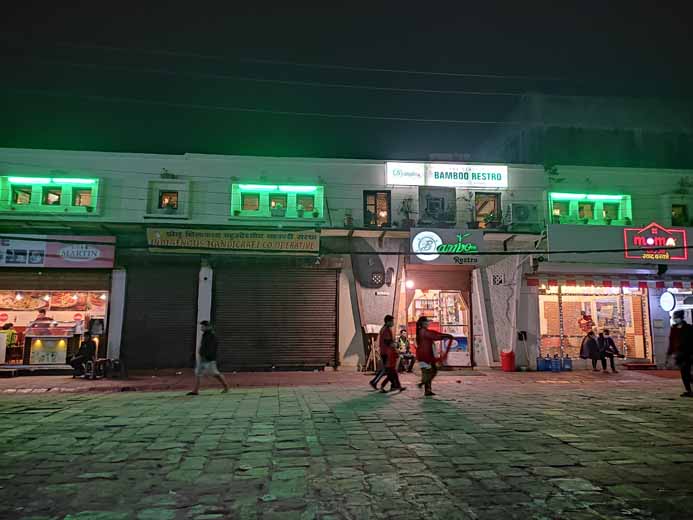
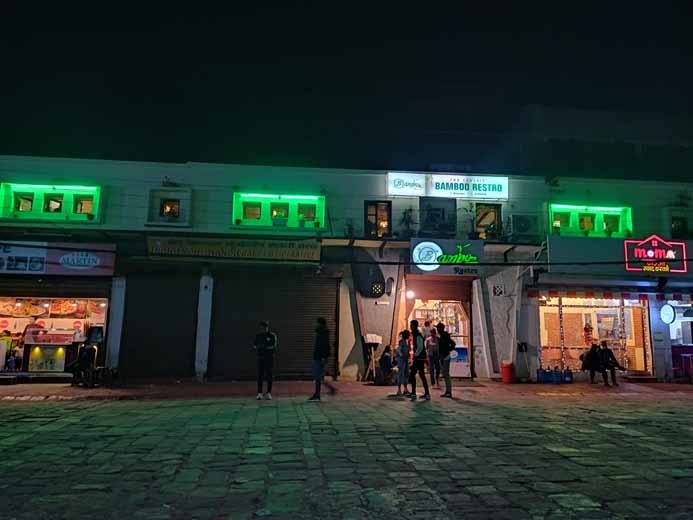
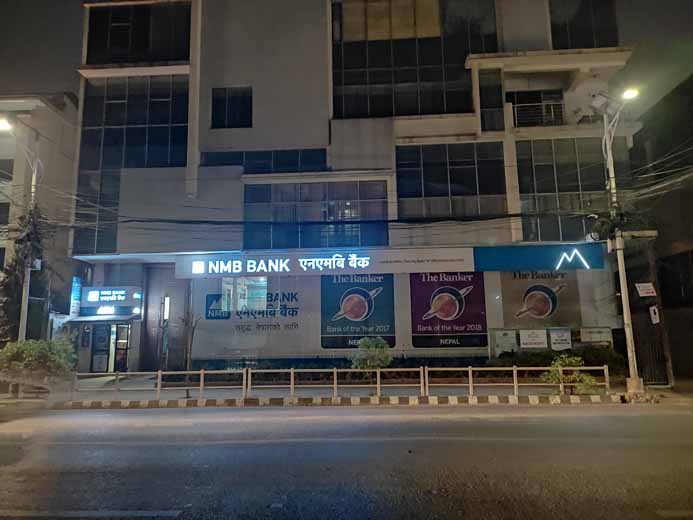
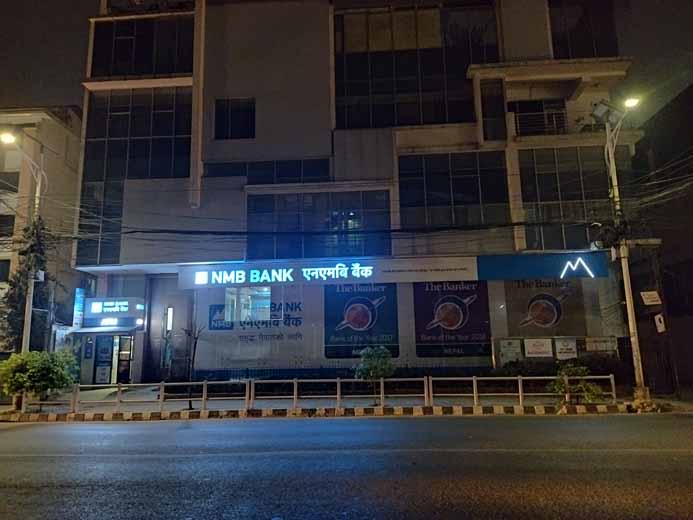
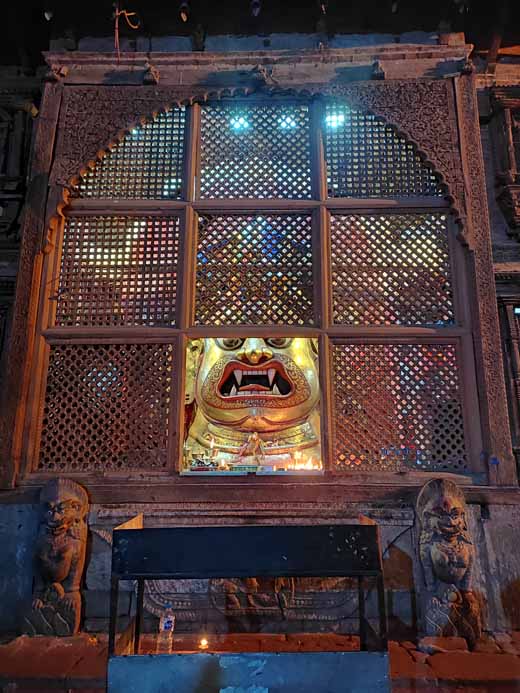



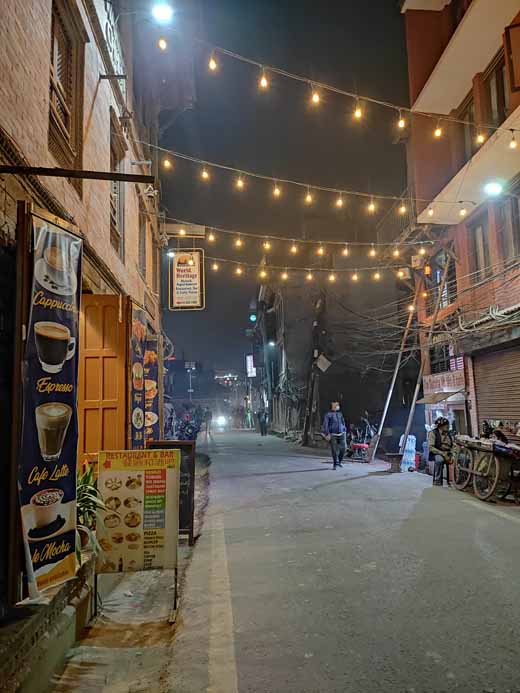
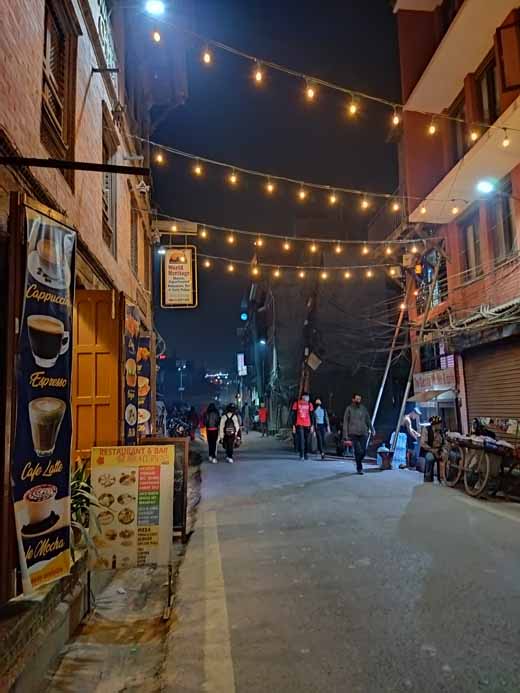
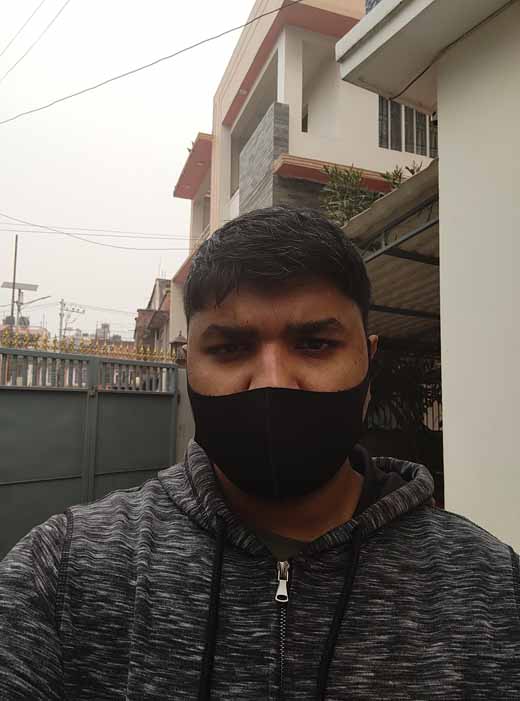















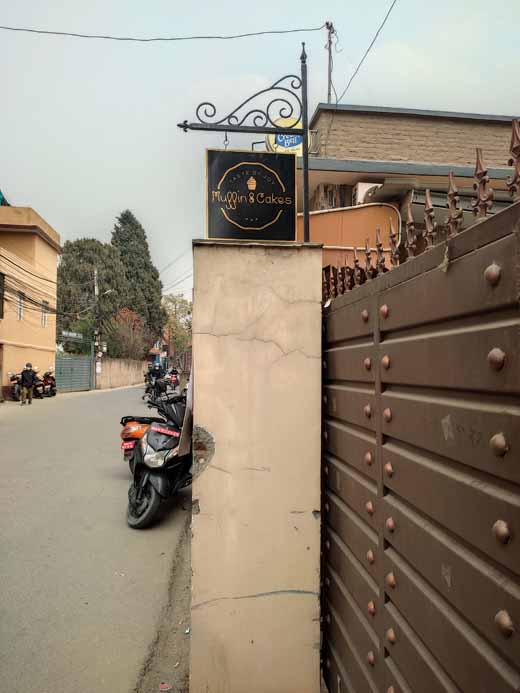

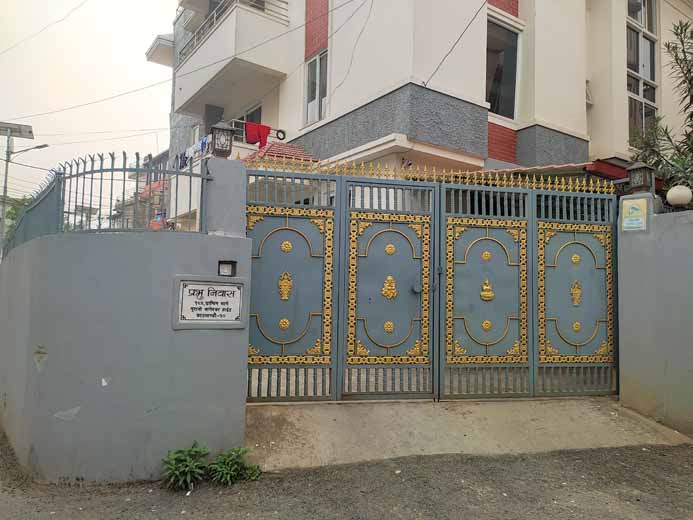
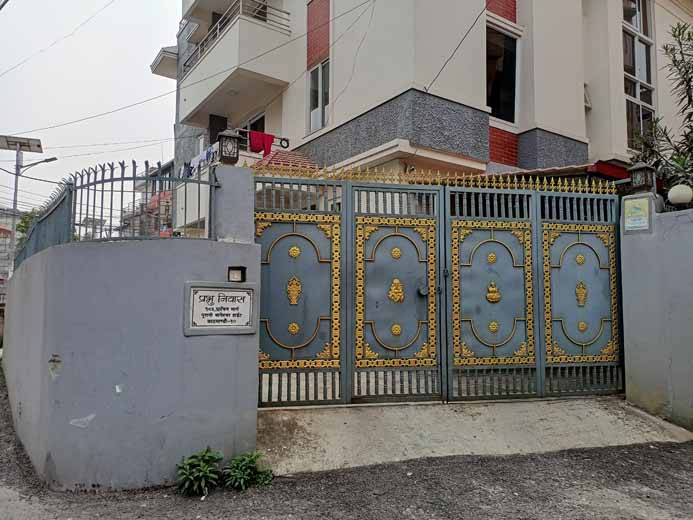
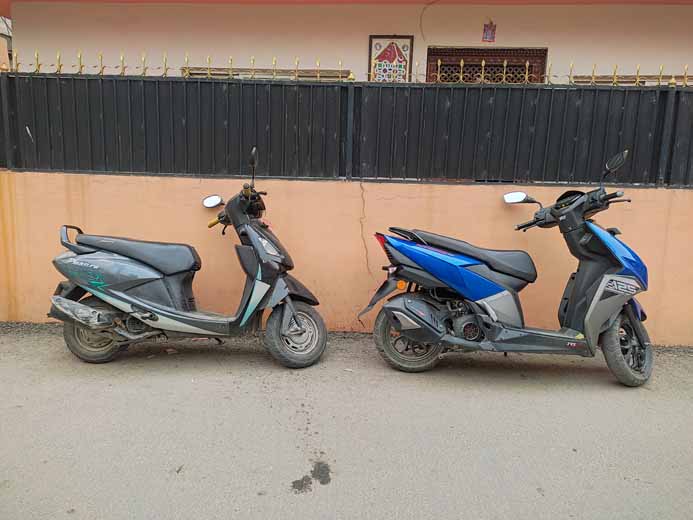
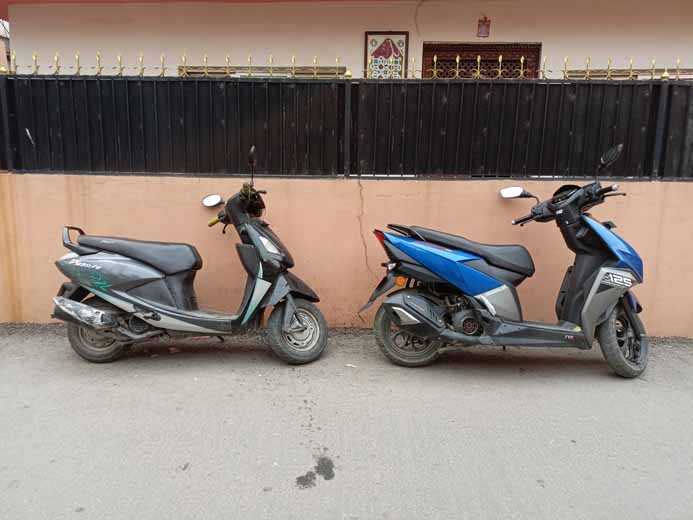









![Best Ultrabooks To Buy in Nepal 2024 [Updated] Best Ultrabook Laptops in Nepal 2023 - June Update](https://cdn.gadgetbytenepal.com/wp-content/uploads/2023/04/Best-Ultrabook-Laptops-in-Nepal-2023-June-Update.jpg)
![Best Gaming Laptops in Nepal 2024 [Updated] Best Gaming Laptops in Nepal 2023 - June Update](https://cdn.gadgetbytenepal.com/wp-content/uploads/2023/04/Best-Gaming-Laptops-in-Nepal-2023-June-Update.jpg)


![Best Mobile Phones Under Rs. 15,000 in Nepal [Updated] Best Phones Under 15000 in Nepal 2024 Budget Smartphones Cheap Affordable](https://cdn.gadgetbytenepal.com/wp-content/uploads/2024/03/Best-Phones-Under-15000-in-Nepal-2024.jpg)
![Best Mobile Phones Under Rs. 20,000 in Nepal [Updated] Best Mobile Phones Under NPR 20000 in Nepal 2023 Updated Samsung Xiaomi Redmi POCO Realme Narzo Benco](https://cdn.gadgetbytenepal.com/wp-content/uploads/2024/01/Best-Phones-Under-20000-in-Nepal-2024.jpg)
![Best Mobile Phones Under Rs. 30,000 in Nepal [Updated]](https://cdn.gadgetbytenepal.com/wp-content/uploads/2023/12/Best-Phones-Under-30000-in-Nepal-2024.jpg)
![Best Mobile Phones Under Rs. 40,000 in Nepal [Updated] Best Phones Under 40000 in Nepal 2024 Smartphones Mobile Midrange](https://cdn.gadgetbytenepal.com/wp-content/uploads/2024/02/Best-Phones-Under-40000-in-Nepal-2024.jpg)
![Best Mobile Phones Under Rs. 50,000 in Nepal [Updated] Best Phones Under 50000 in Nepal 2024 Smartphones Midrange](https://cdn.gadgetbytenepal.com/wp-content/uploads/2024/02/Best-Phones-Under-50000-in-Nepal-2024.jpg)
![Best Flagship Smartphones To Buy In Nepal [Updated] Best Smartphones in Nepal 2024 Flagship Premium Samsung Apple iPhone Xiaomi OnePlus Honor](https://cdn.gadgetbytenepal.com/wp-content/uploads/2023/09/Best-Smartphones-in-Nepal-2024.jpg)